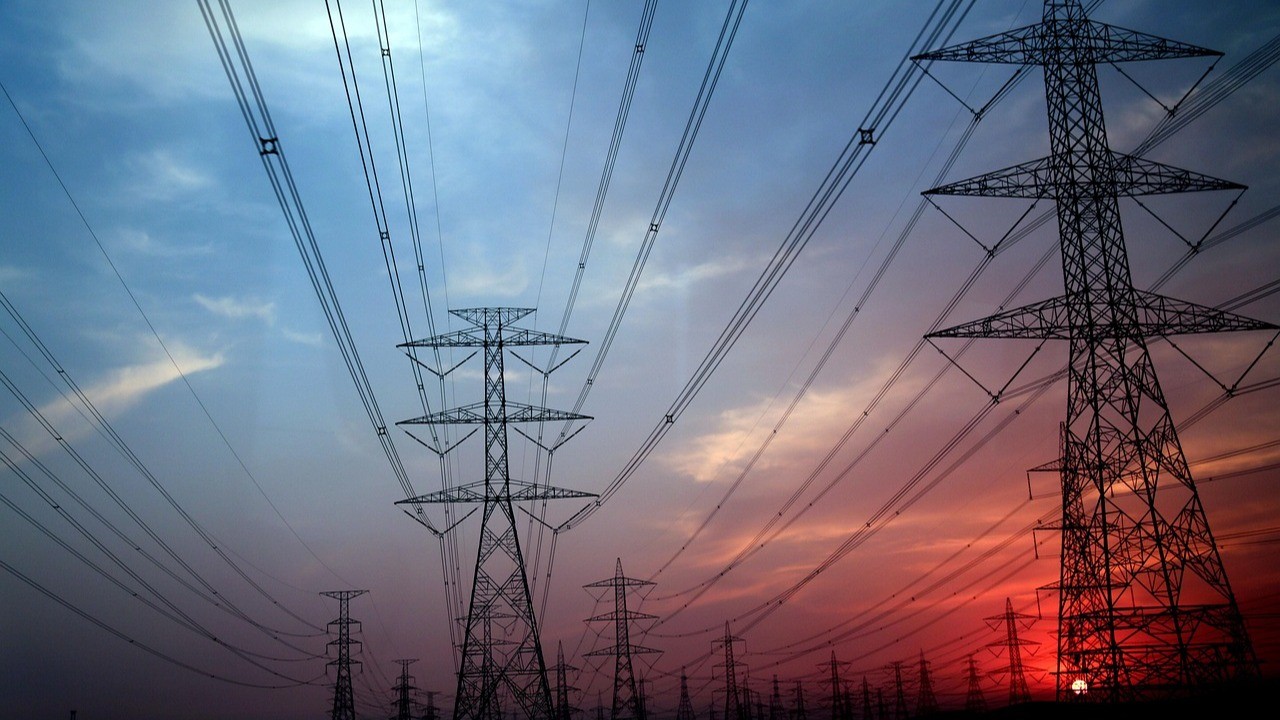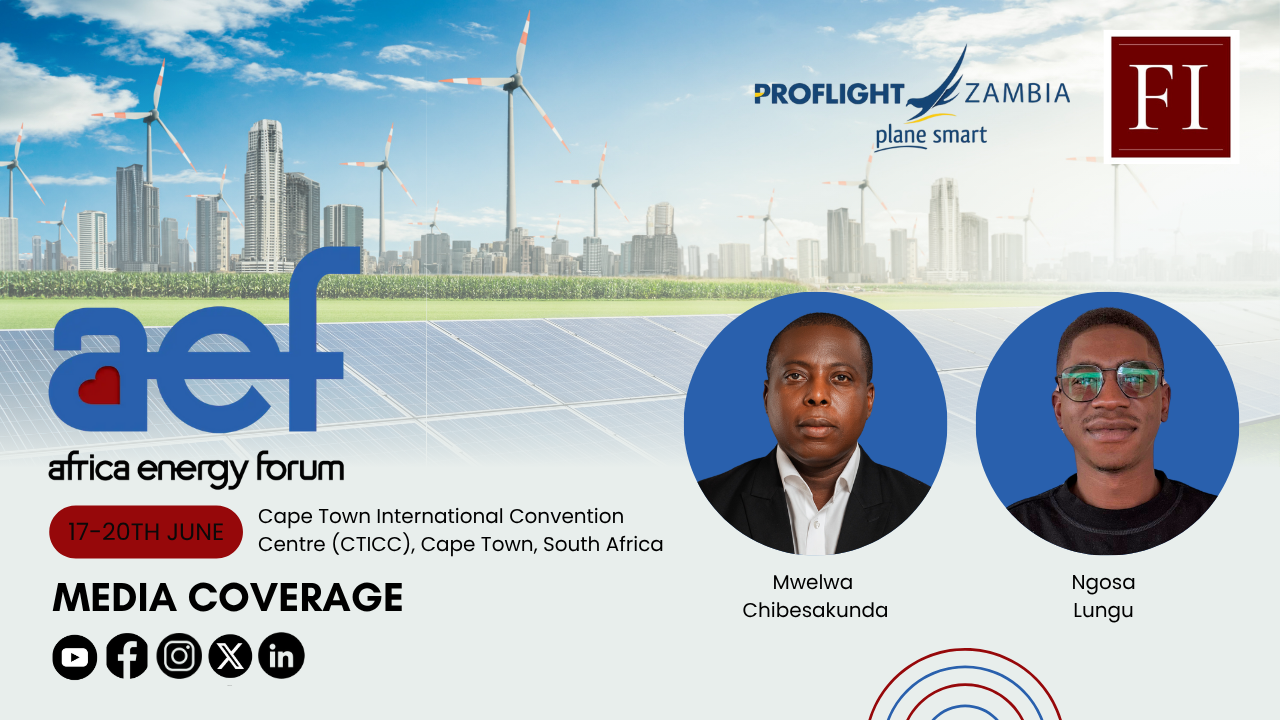From Ambition to Implementation: Financial Insight's Journey with Africa's Energy Champions at AEF 2025
17 JUNE 2025 : 04:31AM
Mwelwa Chibesakunda CEO Financial Insight
As Financial Insight commences our third year as media partner at the Africa Energy Forum, we reflect on a transformative journey that has taken us from observing Africa's energy ambitions to witnessing the emergence of actionable solutions that promise to electrify the continent. This year's theme, "Africa United," couldn't be more fitting as we've watched industry leaders move from talking about possibilities to implementing real change.

A Partnership Built on Progress
Our media partnership with AEF has afforded us the privilege of following remarkable companies like GreenCo and Stanbic Bank Zambia (Standard Bank Group) as they've evolved from participants to leaders in Africa's energy transformation. These organizations exemplify what happens when vision meets execution, and their consistent presence at AEF over the past years has been nothing short of inspiring.
GreenCo's founder and CEO, Ana Hajduka Shields, captured the urgency perfectly in her recent commentary: "no single country can address Africa's power needs alone." This sentiment has been the thread connecting our coverage across multiple AEF editions, as we've documented the shift from national energy strategies to regional solutions that recognize Africa's interconnected energy future.
Similarly, Stanbic Bank Zambia's commitment to financing Africa's energy infrastructure has been a constant throughout our AEF coverage, demonstrating how financial institutions are adapting their approaches to meet the continent's unique energy financing needs.
The Urgency of Now
What strikes us most profoundly about AEF 2025 is the palpable shift from aspirational planning to implementation urgency. As EnergyNet's Managing Director Simon Gosling emphasized, "Something urgent has to be achieved as we simply cannot have another 10 wonderful years of investment into projects." This sentiment echoes throughout every conversation we've had with industry leaders over the past three years.
The numbers tell the story of this urgency. With SADC regional demand set to grow 8-14 times over the next 30 years and Mission 300 targeting power connections for 300 million people by 2030, the window for action is narrowing rapidly. Our coverage has consistently highlighted that the infrastructure requirements are staggering: South Africa alone needs 14,500 km of new transmission lines, 210 transformers, and 56 GW of new capacity by 2034.
Regional Markets: The Game Changer
Perhaps the most significant development we've witnessed through our AEF coverage is the evolution of regional electricity markets. The anticipated 2026 launch of SAWEM (South African Wholesale Electricity Market) represents a watershed moment that we've been tracking since its early conceptualization phases.
GreenCo's approach exemplifies this regional thinking. As Ana Hajduka Shields outlined, their strategy centers on three integrated principles: building with utilities, trading regionally, and financing flexibly. This integrated approach to generation, transmission, and trading represents the kind of holistic thinking that our coverage has consistently advocated for.
The Southern African Power Pool (SAPP) evolution toward greater private participation means that African-generated electrons can finally move fluidly across borders and be valued fairly. This isn't just about price discovery—it's about creating the infrastructure for a truly integrated African energy market.
Financial Innovation: Beyond Traditional Models
Our partnership with companies like Stanbic Bank Zambia has provided unique insights into how financial institutions are innovating to support Africa's energy transition. The traditional sovereign guarantee model, which has already inflated contingent liabilities in South Africa by over $37 billion, is clearly unsustainable.
The solution lies in hybrid revenue models that combine contracted capacity payments with merchant income via regional markets. This approach offers multiple benefits: enhanced bankability through revenue diversification, off-balance-sheet classification under IMF fiscal risk rules, and resilience through multiple revenue streams.
As we've reported consistently, the question isn't whether Africa needs new financing models—it's whether stakeholders are ready to embrace dual-revenue regional infrastructure planning as the new standard for scalable, investable energy systems.
Technology and Transformation
AEF 2025's focus on powering AI data centers and accelerating large-scale solar projects reflects how rapidly Africa's energy landscape is evolving. Commercial and industrial demand is surging, requiring infrastructure, investment, and regulatory models that can keep pace with technological advancement.
Our coverage has documented how companies like GreenCo are positioning themselves not as disruptors, but as collaborators bringing liquidity, structure, and regional reach to support this transformation. Their platform approach to unlocking variable renewable energy generation and efficient electron trading represents the kind of pragmatic innovation that Africa needs.
The Ubuntu Approach to Energy Justice
What has remained constant throughout our AEF coverage is the emphasis on energy justice and inclusivity. This year's grounding in Ubuntu—the African philosophy of shared humanity—reinforces that the energy transition must be cooperative, equitable, and Africa-led.
The parallel Youth Energy Summit (YES!), welcoming over 4,000 participants, demonstrates the continent's commitment to involving the next generation in shaping Africa's energy future. Companies like DBSA, Nedbank, and others are supporting this initiative not just as sponsors, but as active partners in youth engagement across the continent.
Looking Forward: Implementation Imperative
As we reflect on three years of AEF coverage, the transformation we've witnessed is remarkable. From aspirational speeches to concrete implementation frameworks, from national strategies to regional cooperation, from traditional financing to innovative hybrid models—the progression has been both rapid and purposeful.
The presence of 33 country delegations, including heads of state and ministers, alongside hundreds of private sector leaders, signals that Africa is ready to lead its own energy transition. President John Dramani Mahama of Ghana, South Africa's Minister Dr. Kgosientsho Ramokgopa, Nigeria's Minister Adebayo Adelabu, and other confirmed speakers represent the kind of high-level political commitment that makes implementation possible.
A United Africa, A Powered Future
Our media partnership with AEF has provided us with a front-row seat to witness Africa's energy renaissance. Companies like GreenCo and Stanbic Bank Zambia have shown us what's possible when vision meets execution, when regional thinking replaces national silos, and when innovation serves justice.
As Ana Hajduka Shields concluded in her recent commentary, "if we are truly Africa United, then we must plan together, build together, and trade together." This sentiment captures not just the theme of AEF 2025, but the spirit of transformation we've been privileged to document.
The conversation has shifted from whether Africa can achieve energy security to how quickly it can be implemented. Time, as Simon Gosling noted, is the determining factor. The good news is that Africa is ready, willing, and increasingly able to power its own future.
Financial Insight remains committed to covering this critical journey, documenting not just the milestones but the meaningful partnerships that make Africa's energy transformation possible. The future is bright, and it's powered by African innovation, regional cooperation, and the unwavering commitment to get things done.
Financial Insight has been a media partner of the Africa Energy Forum since 2023, providing comprehensive coverage of Africa's energy transformation journey.
Featured Image
2025-06-17 04:31:27
Category: Economic and Business Sectors
